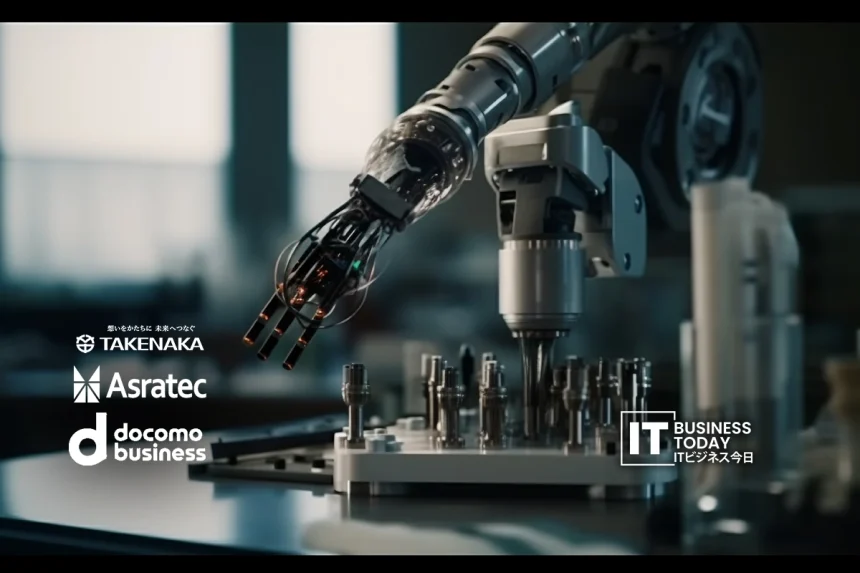Takenaka Corporation, NTT Docomo Business Corporation (formerly NTT Communications), and Asratec Corporation announced the development of a “Robot Navigation System” for construction site robot operation using spatial ID.
The spatial ID is a data standard being developed by the Ministry of Economy, Trade and Industry (METI) and others that integrates building floor plans, equipment placement locations, and robot patrol routes. By dividing 3D space into cubes (voxels) and assigning a unique ID to each voxel, any location on Earth can be identified. The robot navigation system combines the 3D location information from spatial ID with “tateras Task Coordination,” a service developed by NTT Docomo Business that supports task coordination on construction sites, to enable autonomous robot movement within construction sites. This enables highly accurate route planning for patrol robots and other robots, reducing the effort and cost of robot operation and contributing to alleviating labor shortages and improving productivity. The construction industry is developing robots that can perform tasks in place of humans to alleviate labor shortages and improve safety and productivity. Operating robots on construction sites presents challenges, including the difficulty of moving between indoors and outdoors and in three dimensions, as well as the cost of developing maps required for autonomous movement.
To address this, the three companies began developing a robot operation system using spatial IDs in 2022 and conducted field trials using the four-legged robot “Spot” to patrol construction sites. The system builds maps based on construction site drawings and construction management information (daily work locations, heavy equipment locations, and the loading and unloading of materials and equipment) entered into “tateras Task Coordination,” and then uses spatial IDs to set the robot’s movement route. “tateras Task Coordination” can assign start and end times and actual scale (in millimeters) to construction management information. This allows for flexible planning of robot movement, while checking whether sufficient space is available for movement based on constantly changing construction conditions. This enables highly accurate route planning and autonomous movement, even on construction sites where determining whether movement is possible is difficult based on the robot’s point cloud map alone, such as restricted areas and protected areas that change depending on the daily progress. In addition, the robot’s movement space uses a spatial ID, which can specify its location in 3D space. This allows seamless autonomous movement, even on complex construction sites where movement occurs indoors and outdoors, and between floors. By using spatial ID as a common language for inter-system collaboration, the system enables the simultaneous operation of different types of robots or multiple robots.
Also Read: Mitsubishi Electric Joins JAXA Fund for Satellite Solar Tech
In a demonstration experiment conducted at a construction site owned by Takenaka Corporation, robot patrols using the system reduced the burden of on-site staff’s inspection work, reducing their work hours by approximately 30%. Furthermore, by using spatial ID as a common language between systems, the system is expected to reduce robot system development costs by approximately 30%. Takenaka Corporation was responsible for providing knowledge about the construction site, planning the overall system, providing the demonstration site, and verifying and analyzing the results of the demonstration experiment. NTT Docomo Business was responsible for developing the integration function between the system and “tateras Inter-Work Coordination,” providing a 4D spatiotemporal information platform that combines 3D information and time for construction sites, conducting the demonstration experiment, and verifying and analyzing the results. Asratec was responsible for system development, development of customization functions for Spot, and implementation of the demonstration experiments.
Going forward, they will resolve issues identified in the demonstration experiments so far, with the aim of commercializing the system in 2027. With the technology they have developed, Takenaka Corporation, NTT Docomo Business, and Asratec will contribute to reducing the working hours of on-site staff and creating a more comfortable construction site environment, as well as promoting information technology for the use of digital twins and improving the efficiency of building design, production, and operations.
SOURCE: Yahoo







